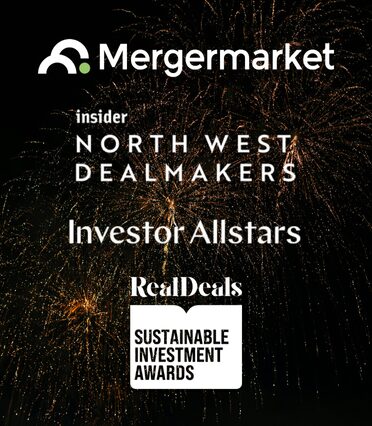
ECI’s Commercial Team has been supporting our portfolio CEOs and their HR leaders with how they think about people, wellbeing and employee engagement for a number of years. But with Covid-19 leading to the forced disruption of many long-standing work practices at an unthinkable pace, attitudes towards working from home have fundamentally shifted and the priority given to employee’s health and wellness has accelerated.
To support this ECI have helped our portfolio to collate best practice, set up a bench of HR and legal advisors and rolled out several wellbeing surveys. It has been great to see how people have adapted to the new way of working, and now the question everyone is asking is, what next?
In this portfolio perspective series, we surveyed CEOs and HR leaders across our portfolio, to understand how they responded to lockdown, and what initiatives they plan to take forwards. Across the series we’ll be looking to answer questions around getting the future of working from home right; making sure you have visibility over what matters; building on the wellbeing momentum; a changing communication strategy; and how to best harness the positive momentum from lockdown. In this first piece in the series, we ask…
How do you get the future of working from home right?
Whether the move to flexible working was already happening before lockdown began, or it occurred only in exceptional circumstances, all companies across our portfolio were forced to adapt at speed when Boris Johnson announced lockdown on the 23rd March. A monumental effort from IT, HR and Operations teams suddenly transitioned the majority of workforces into a working from home environment, and many decade-old sacred ways of thinking about the importance of big decisions being made face-to-face were demolished overnight.
Whilst the immediate practical considerations took priority at the start of lockdown, now that the fog has cleared, people are beginning to look to the future of work and the implications of what the working from home transition means long-term. In May, Facebook and Twitter decided to permanently shift to remote working with Twitter saying employees can work from home “forever”. This isn’t just Silicon Valley forward-thinking, the CEO of Barclays also said there would be a long-term adjustment to their location strategy.
As the working from home experiment has proven itself, and people across generations are starting to see the positive impact on their life, this may become an employee requirement. 100% of the HR leaders we asked saw that in the long term there will be an adjustment in the working from home balance or a need to more carefully review current working practices to support more flexible ways of working going forwards.
In order to achieve this, they will need to build on what has already worked well during lockdown – such as engaging early, consulting employees, and being open and transparent. But they’ll also need to answer a series of questions that will help them set up a structure for their future plans:
How do you vary the approach for different teams and departments?
One of the key things we learned during lockdown is that if you’re not sure how to adjust your approach, the best thing to do is to ask. Clearly for some teams it will be obvious that they will need to be on-site more for practical reasons, but for others the use of pulse surveys can be used to gather information on their personal circumstances and ways of working that can help determine who can and who can’t work from home.
Taking a team-by-team, or even and individual-by-individual, approach across the board will mean your decisions are effectively informed by your people, and no teams will feel that they have been treated unfairly.
Once you had made those decisions it is important to consider how you ensure that those who are working from home still feel included. For example, Tesco has a policy whereby any virtual meeting is conducted with attendees at their desk, regardless as to whether some of them are in the office or not, meaning people at home don’t feel disadvantaged by not being ‘in the room’.
When are we better working together in the same room?
During lockdown you will have found, often surprisingly, that the effectiveness of some meetings has been barely impacted by working remotely, or even improved by a focus on succinctness and making more effort to involve team members. On the other hand there will have been meetings that became harder to manage or to keep to pace.
There is no single answer as to when we are better together and when we aren’t, but as a general rule it will be difficult to have a top-down approach. Your teams will want to understand a baseline in terms of how they need to communicate and structure their day, for example, do you keep set hours, or allow people to flex? Are there minimum check-in levels? Once they understand this, they should feel empowered to input which meetings they think should be attended in person to maintain business effectiveness, and which can be virtual. The last four months have been a big trust exercise, and that should be rewarded by demonstrating trust in asking your employees to decide.
It is important to make sure that as well as the best for your team you also have an eye on what is working best for your clients. Good visibility of KPIs and individual and team performance will also be key to this, to see where lack of face-to-face interaction is causing productivity or customer service to fall. For example our Commercial Team supported ECI portfolio company 4ways to build a dashboard for tracking these different goals, and to understand the effectiveness of working from home across different parts of the business. This means they have much clearer visibility as to when teams or individuals are working better. We’ll be going into more detail on this in our second article in the series, around how to ensure you have the right visibility over what matters going forwards.
There are some benefits which are hard to track though, such as ‘learning by osmosis’ whereby employees learn by watching their peers or seniors. It’s worth taking time to consider which of these softer skills might be being missed and whether it requires being in the same room or whether increasing the virtual touch points between senior and junior team members and stepping up internal champions for training and coaching might still facilitate the same end goal.
How do we maintain our culture remotely?
We’ve probably all had enough of virtual quizzes by now! The truth is maintaining culture in a business is not always easy at the best of times and moving that online is a further complication. Senior teams should set time aside to consider ‘what might our culture look like if projected online?’ In our portfolio this has included sending brownies to people’s homes to recognise a job well done, whilst for others virtual communities have exploded on platforms such as FB Workplace and Teams.
For example, at portfolio company Content+Cloud, they set up a Content+Connected schedule which included various online community classes and events such as art classes and coding for kids; fitness, yoga and meditation classes for the whole family; tech training and even digital CSR programmes, and they have seen their employee engagement scores increase, which in the context of lockdown is remarkable. There is a sense that for many businesses people are coming out of lockdown stronger than before and more connected, as the values and cultures have truly come to life.

What do we do with our physical spaces?
This is a huge question right now, and like many of these questions is hard to answer given we are in unprecedented times. For many, as leases are several years long, the good news is that you won’t have to answer it right now, and you can see what works for you and how the rest of the world looks ahead of renewal. At the moment there are Government measures such as bans on landlords exercising steps for rent arrears that provide protection for employers. But you should be looking at your lease date and thinking what questions you will need to have answered ahead of that.
If your lease is ending sooner, you might need to speed up those decisions. There may be practical questions around how many people you are expecting to be in the office, and if that requires a smaller square footage or no office at all, or whether you need a different set up in order to better control the environment and wellbeing of your people.
There may be slightly harder to answer bigger picture questions, such as how much is your location and office part of your brand, culture and values? How important is it to your recruitment strategy? Can you replicate that physical manifestation of your culture virtually, or not?
It’s important not to rush these decisions, and unless you’re confident about what the future of work will look like in your office, it may be better to extend your lease rather than try and rush through a transformative long-term change under pressure, especially if you’ve already invested in your existing space.
Going forwards, while there may well be some reduction in office space, most commentators do not believe it will be as much as suggested. The physical workplace holds value beyond just a place to do work. It is also a place where people learn, socialise and collaborate meaning the concept of the office isn’t going to go away albeit there may be some reductions where satellite offices are reduced and centralised. The more likely outcome is a hybrid of working from home and in the office, in this event there will still need to be enough office space to accommodate for peak demand on the days that employees do decide to go to the office. It will be the case that the space is just used differently. The key will therefore be flexibility, and to negotiate this into the terms with the landlord at the next round to allow this hybrid model to be employed.


